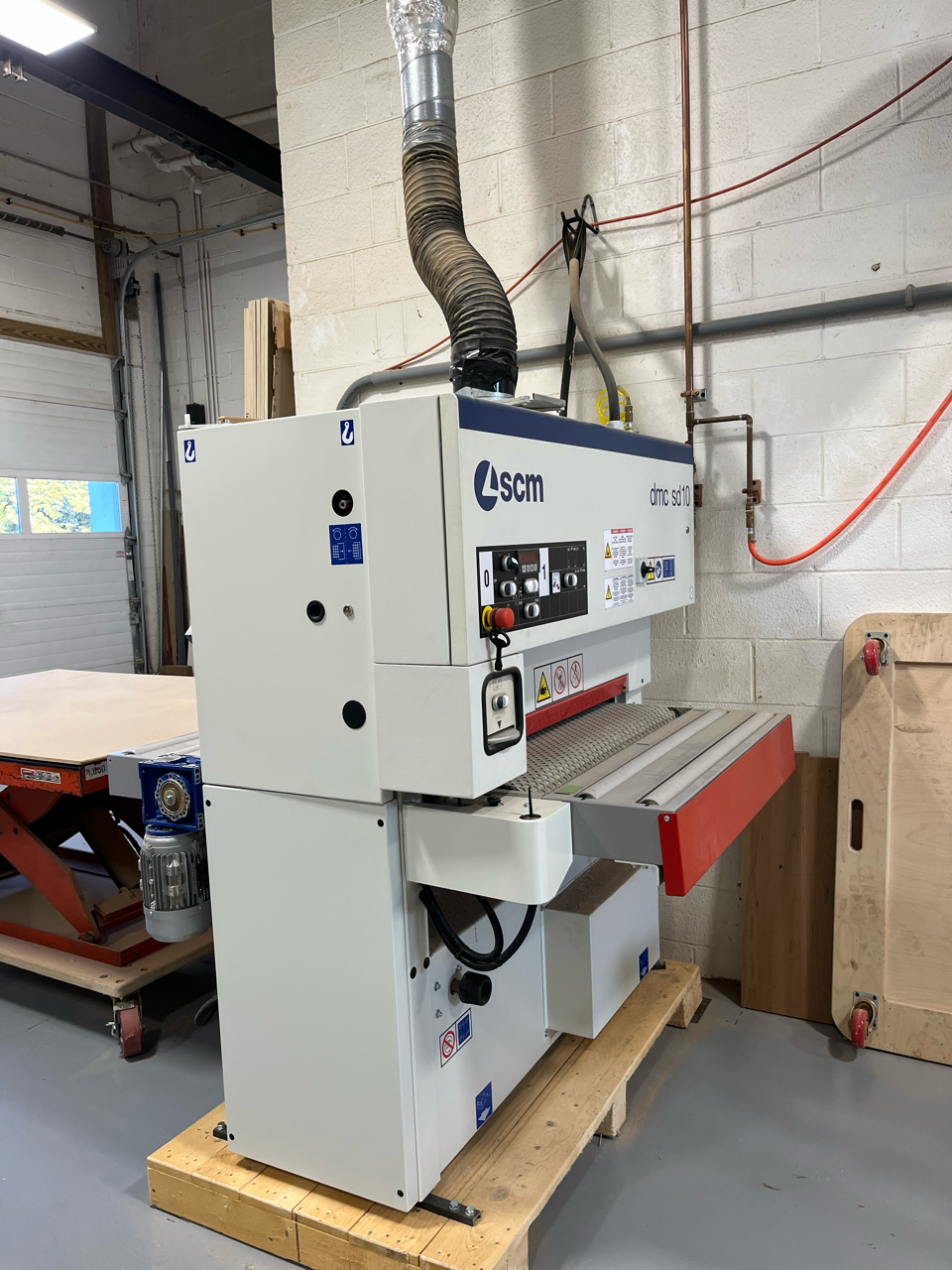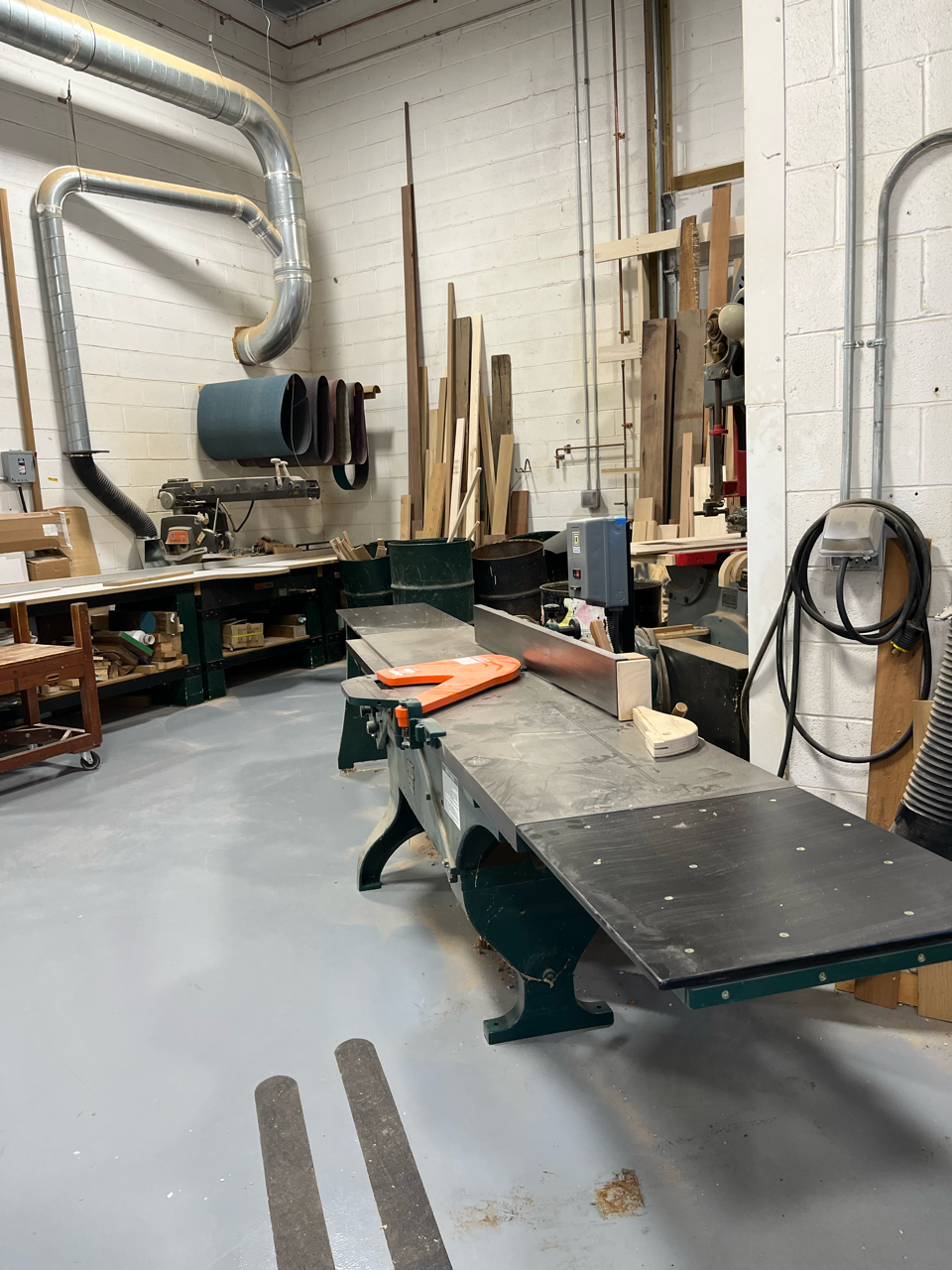Making the right connections
Renaissance Woodworks is a one-man shop that works well with interior designers
Peter McMahon has plenty of room to roam at Renaissance Woodworks, an architectural millwork and cabinet company in Keymar, Md. He’s got a shade over 5,000 sq. ft. of shop space all to himself.
“I’ve been doing this for almost 40 years and still enjoy coming to work each day, which is nice. We all know people marking the days. I will say it’s almost an embarrassment of riches in the amount of space I have. Typically, it would be myself and a couple guys working, but the last three years I’ve been mostly working for myself. There are a number of people I call on for help and all, and it’s working pretty well,” says McMahon.
The shop serves the outskirts of Washington D.C. and specializes in elaborate built-ins and stand-alone furniture for a residential clientele.
Choosing a path
McMahon was born and raised in D.C. and found woodworking after a try at general contracting.
“I originally thought I was interested in being a general contractor. I had a grandfather who was a very successful general contractor who built quite a number of churches in Washington, D.C., and while I was never directly involved with him, the whole idea seemed very interesting to me,” says McMahon.
McMahon was a bricklayer for five years after graduating high school. His fate was sealed after getting a job at Woodstock Design in 1982, a defunct cabinet shop inRockville, Md., where he rose to the position of shop foreman.
“Woodstock Design built freestanding furniture, mostly bedroom and dining room furniture. After starting with them, I felt inspired and consumed by woodworking,” says McMahon.
“Then I got hired at a much larger commercial millwork shop, Hill Enterprises, in Gaithersburg, Maryland. We started out doing residential furniture, and it morphed into commercial, serving primarily the Washington, D.C. market. It was a pretty good-sizedcompany with about 40 people working.”
In 1994, he established Renaissance Woodworking in Gaithersburg. There, he had up to three employees. The busy location aligned him with the right professional contacts.
“Far and away, the biggest source of my work is the same half dozen interior designers and GCs I’ve been working with for almost 30 years. So, it’s nice that I’m not always chasing the work. These connections are really long-standing.”
Shopping for a shop
McMahon purchased the property for his home and shop back in 2006, just as real estate prices were climbing in his area. The 5-1/2-acre lot is in a very rural setting.
“I sought an industrial space to buy,” he says. "The rent was going up so high where I was. I looked to build. I looked into warehouses, condos, and couldn’t find anything. So,I talked to realtors about some more rural properties. Most wanted to show me a barn that wouldn’t be approved for what I was doing. Long story short, this property had an old agricultural building on it, and I saw possibilities.
“I talked to my wife, and we bought this and the house. It’s pretty rural and was a bit of a stretch from what we were used to, but we had four-year-old twins at the time, and we thought it was a wonderful place, an old historic town, to raise them.”
McMahon renovated the three-story agricultural building for a shop. The first floor has three bays, set up for hand tool work and assembly, panel processing, and finishing. There’s also a generous office and drafting area.
The extensive renovations, time it took for local approvals, and overall state of the economy affected his business trajectory at the time.
“The financial crisis of the Great Recession changed a lot for me, and I was kind of out of business for 18 months. For some people I was the preferred supplier, but being out for a while as I got new shop going didn’t work for them. The timeframe to get things going was really surprising to me, but the county was much stricter on a number of things than you can imagine, and the process was crazy long.”
The D.C. market
McMahon primarily serves the suburban D.C. market, with an occasional out-of-state job. He prefers to work with the same core of designers he’s always had. Very rarely does he work directly with homeowners.
“None of us are getting any younger, and a couple of my designers aren’t doing as much work as they did years ago, so I am starting to do some work with some newer people. The biggest advantage to working with designers is letting them handle the homeowners because I’m not a sales-type of person.”
Most of the work is traditional in style and stained. Some jobs are quite involved and can take over a year to complete.
“I like the longer jobs more than the shorter, smaller ones,” he says. "The difficulty is thatyou still have to service your regular customers. You still have to price and bid. But the designers know what you’re doing and know you’re somebody that’s going to sweat the details.”
Staying solo
McMahon says for the most part, business is steady every year and he doesn’t see any great fluctuations. He’s not looking to hire anyone at this point and outsources to keep up.
“The only thing we outsource are some drawer boxes and some doors. I’m installing probably 75 percent of our jobs and the other quarter are contracted through designers and GCs who do their own install arrangements.”
He says that when he first moved to the area, he thought there would be all sorts of semi-retired people looking for work, but it hasn’t been the case. He isn’t interested in automation at this point in his career.
“If I was a younger guy just getting started, I’d probably want to be in a more automated shop just because you want to be looking ahead. Having said that, there’s going to be a place for non-automated shops for a long time, just because there are things we can do that is the easiest way to do it.”
McMahon is 65 and says he’s only starting to consider retirement options.
“I would hope I’m still doing this for another five years,” he adds. "The last six months was unusually a little slower for me, but right now we’re jam-packed. I’m booked out this year and queuing out into 2025. So, the future looks strong, I would say.”
Learn more at renaissancewoodworksinc.com.


What’s in the shop
SawStop table saw • SCMI panel saw and wide belt sander • Powermatic 24” planer & lathe • Northfield 12” and 16” jointers • Holz/Her edge bander • Polamco shaper • Yates American 30” Snowflake band saw • DeWalt 16” radial arm saw • Panto Router • Ritter line drill • Blum hinge inserter • Murphy Rogers dust collector • Presto scissor lift • Polar 10-hp air compressor and dryer • American Rotary 50-hp phase converter • Col-Met spray booth
Originally published in the July 2024 issue of Woodshop News.







